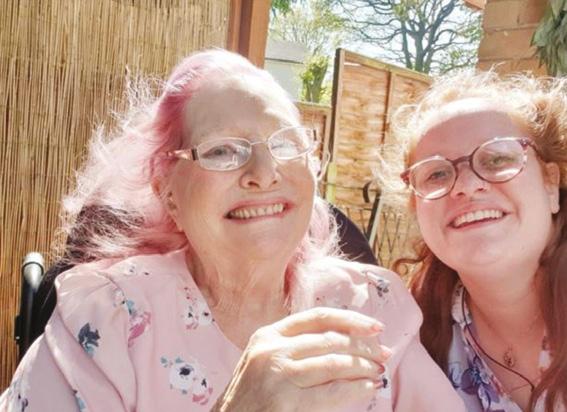LONG-TERM SUPPORT
WHY MANAGE POSTURE? A wheelchair users very independence can hinge on effective postural management within the wheelchair. Postural management can and does influence:Systemic function (i.e the effect of posture on all the bodily systems including the cardiovascular system, respiratory system and digestive system). Ease of propulsion in a manual wheelchair. Ease of access to driving controls in a powered wheelchair. Management of the interface between the wheelchair and other equipment of daily living. Access to and completion of all activities of daily living inclusive of personal care, work/ education and leisure activities. Access to communication and other assistive technology devices such as environmental controls.
L
ucy Weech is the Clinical Director leading the Wheel of Health team based throughout the UK and Ireland. The team consists of 17 Clinical Associates who all have extensive post graduate experience in the postural management of complex clients. Presentations range from physical disability following trauma to those with profound and multiple learning difficulties. These clients frequently present either during the litigation process or post settlement. All Clinical Associates manage a highly complex caseload of children and adults. Within this role, clincians complete 24hour postural management assessments (including medico-legal reports); assessment, prescription and provision of specialist equipment; assessment for provision of wheelchair accessible vehicles; personal care and manual handling assessments.
WHY IS POSTURAL MANAGEMENT SO CRITICAL FOR WHEELCHAIR USERS? Posture is often seen as static, with the posture presented at assessment identified as being the clients permanent posture, likely to stay that way. But consider how our own posture changes as we age, and our lifestyle changes. How much more so, then, will the postural requirements of wheelchair users change under the influence of rehabilitation, variable and changeable muscle tone, spasticity patterns, behavioural changes and so forth.
92
2021/2 2
HOW DOES A POSTURAL MANAGEMENT SPECIALIST/EXPERT EVALUATE A CLIENT’S NEEDS WHEN ASSESSING? The first step in an assessment process is to carefully evaluate the client’s physical presentation taking account of deformity, altered muscle tone, spasticity patterns, impaired sensation, effects of trauma and so forth. These findings should be clinically recorded to give a baseline to subsequent problem solving. It is important to evaluate how much correction is achievable for that which is obviously seen. For example, where there is a pelvic asymmetry that is correctable, then any seating solution should seek to correct it. If it is not correctable, then a posture management solution should seek to accommodate it, to reduce the risk of the deformity becoming worse.
HOW DO THE FINDINGS OF THAT EVALUATION INFLUENCE THE SELECTION OF THE MOST APPROPRIATE EQUIPMENT? Having completed postural analysis and recorded clinical findings in detail, the professional clinician’s responsibility lies in the selection of equipment that is clinically appropriate and addresses issues identified during the assessment process. Features of wheelchairs and posture management equipment informs this process. The professional is therefore responsible for ensuring that they have a good grasp of the features of the equipment and how they affect posture. It is rare to find a single product that will effectively manage sevenstarmedia.co.uk


























































